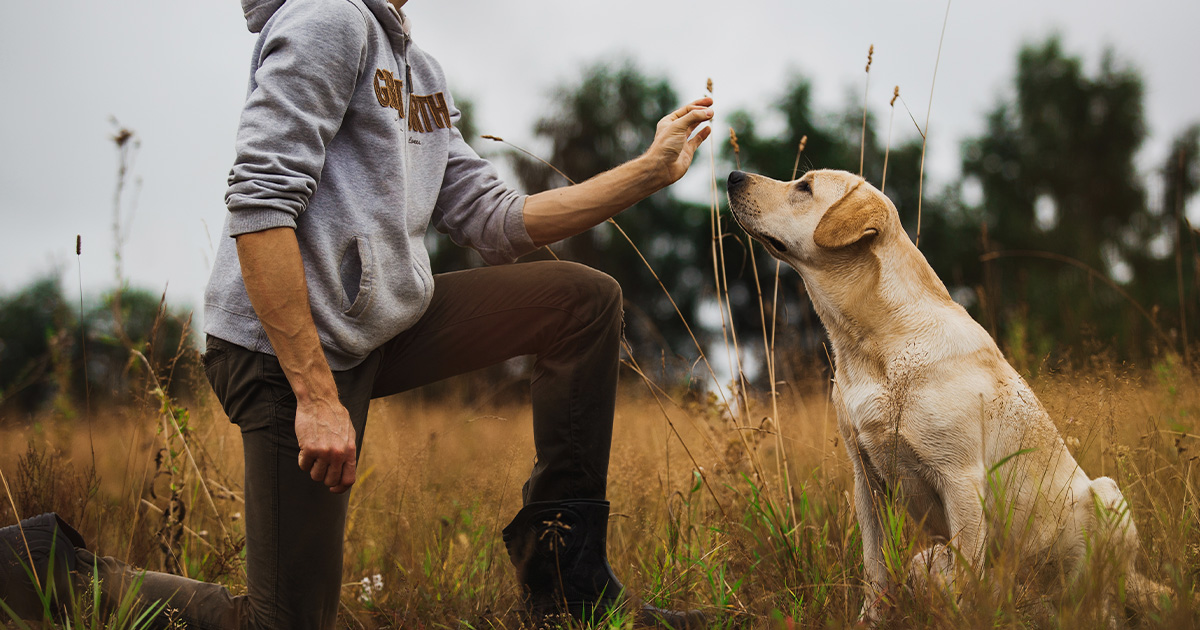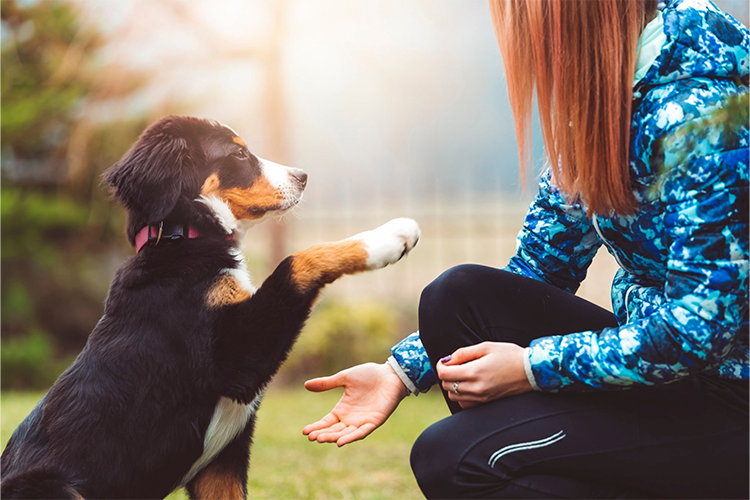Newbie's Overview to Successful Pet Training in the house
Effectively educating a pet at home requires a nuanced understanding of canine behavior and efficient interaction strategies. Developing clear training goals, utilizing high-grade incentives, and maintaining uniformity across household participants are important elements. Integrating training into everyday routines can enhance both involvement and retention.
Comprehending Canine Habits
Recognizing pet dog actions is essential for reliable training and cultivating an unified connection between human beings and their canine companions. Pet dogs interact mainly through body movement, vocalizations, and face expressions, making it vital for proprietors to translate these signals precisely. Acknowledging actions such as tail wagging, grumbling, or cowering can provide insights right into a pet's emotion and objectives.

Typical behavior problems, such as aggression, stress and anxiety, or excessive barking, often stem from misconceptions or unmet requirements. Observing and dealing with these issues immediately can avoid acceleration and make sure a favorable training experience. By fostering a deep understanding of pet dog behavior, proprietors can tailor their training techniques to suit their canine friends, eventually bring about a well-behaved and satisfied pet.
Necessary Training Tools
A fully equipped training area can considerably boost the efficiency of canine training at home. Essential training tools ensure that both the dog and the trainer can take part in effective sessions that promote discovering and bonding.

Purchasing a durable chain and a comfy, well-fitting collar or harness is essential for security and control. These tools aid establish limits and ensure the canine remains protected during training. In addition, a marked training area, free from interruptions, aids concentration for both the fitness instructor and the pet dog.
Educating aids such as training pads, cones, or dexterity devices can likewise boost the experience by introducing variety and obstacles. Having a notebook or electronic app for tracking progression can be important, allowing you to keep in mind successes and areas for improvement. Making use of these vital tools will certainly create a positive training setting and lay the foundation for effective knowing.
Producing a Training Regimen
Establishing a consistent training routine is crucial for efficient pet dog training in the house. A well-structured regular not just assists in enhancing wanted behaviors yet likewise supplies your dog with a sense of security and predictability. To produce a reliable training regular, start by recognizing certain Homepage training objectives, such as fundamental original site commands, chain strolling, or house-breaking.
Pick a designated time each day for training sessions, preferably when your dog is receptive and sharp. Procedure must be brief, roughly 5 to 15 minutes, to maintain emphasis and avoid exhaustion. Consistency in timing and environment will certainly enhance your pet dog's learning experience.
Integrate training right into everyday activities to enhance skills. Technique commands during walks or mealtime, which incorporates finding out right into natural regimens. In addition, stay versatile and change the regular as essential, suiting your pet dog's energy levels and mood.
Favorable Reinforcement Methods
Favorable reinforcement techniques are basic to effective pet training, promoting desired habits through rewards instead of punishment. This approach makes use of positive stimulations, such as treats, appreciation, or play, to urge canines to repeat details activities. The foundation of this method is timing; incentives must be given immediately adhering to the desired habits to create a clear association.
When applying favorable support, it is necessary to choose rewards that are motivating for your pet dog. High-value deals with, such as small pieces of poultry or cheese, can be especially effective during training sessions. Furthermore, varying the rewards can preserve your canine's interest and interest.
Beginning with easy commands, like "rest" or "remain," and slowly progression to more complicated jobs. Uniformity is essential; make certain that all family participants utilize the exact same commands and incentive systems to prevent confusion.
In addition, it is crucial to remain individual and stay clear of irritation. Dogs, like people, find out at their very own pace. By promoting an encouraging training environment with favorable support, you can boost your canine's discovering experience while reinforcing the bond see between you and your furry buddy, laying the foundation for effective training outcomes.
Common Training Difficulties
While educating a pet dog in the house can be a gratifying experience, it commonly features a collection of common challenges that can evaluate both persistence and consistency. One common problem is disturbance. Dogs may end up being quickly sidetracked by noises, motions, and even fragrances in their atmosphere, making it tough to preserve their focus during training sessions.
One more challenge is disparity in commands and reinforcement. It can impede and confuse the pet development if family participants make use of various signs or benefits. Establishing a unified method is necessary for efficient communication.
Additionally, dogs can experience aggravation or tension, especially if they do not understand what is expected of them. This can lead to unwanted habits, such as eating or barking.
Lastly, the timing of reinforcement is critical (Dog training). Postponed benefits can diminish the performance of positive support, as pets may fall short to connect the behavior with the incentive
Getting over these difficulties requires dedication, clear communication, and an organized training plan. Identifying and dealing with these usual challenges will certainly lead the way for a more pleasurable and effective training experience in your home.
Verdict
In verdict, successful dog training at home necessitates an extensive understanding of canine actions and reliable interaction strategies. By establishing clear training goals and utilizing top quality treats alongside positive reinforcement, the training process becomes more gratifying for both the fitness instructor and the pet dog.
Developing a regular training regimen is crucial for reliable pet dog training at home.Favorable reinforcement techniques are fundamental to reliable pet training, advertising preferred behaviors through incentives instead than penalty (Dog training). By promoting a helpful training atmosphere with favorable reinforcement, you can enhance your dog's discovering experience while reinforcing the bond in between you and your fuzzy companion, laying the foundation for effective training results
In conclusion, successful dog training at home demands a detailed understanding of canine behavior and effective interaction methods. By establishing clear training objectives and using high-quality deals with together with favorable support, the training process ends up being much more fulfilling for both the pet dog and the trainer.